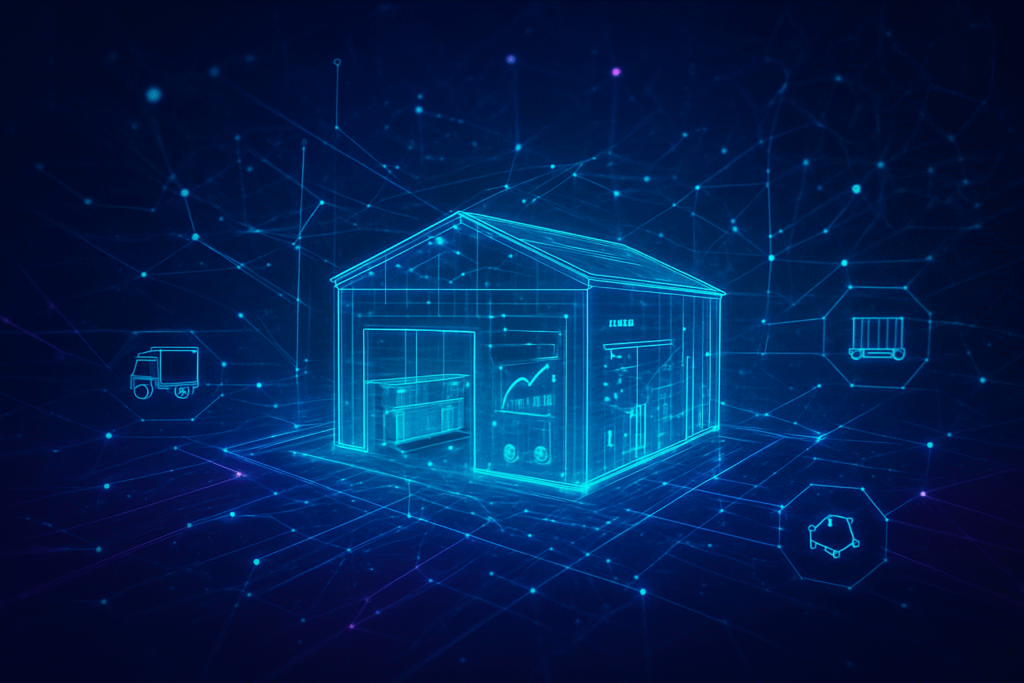
As of November 2025, the global supply chain landscape is undergoing a radical transformation, driven by the synergistic power of Artificial Intelligence (AI) and digital twin technology. No longer merely buzzwords, these advanced tools are actively rewriting the rules of supply chain management, moving beyond traditional reactive strategies to establish unprecedented levels of resilience, predictive capability for disruptions, and accelerated recovery. This paradigm shift, recently highlighted in a prominent Supply Chain Management Review article titled 'Beyond resilience: How AI and digital twins are rewriting the rules of supply chain recovery,' underscores a critical evolution: from merely responding to crises to proactively anticipating and mitigating them with behavioral foresight.
The increasing frequency and complexity of global disruptions—ranging from geopolitical tensions and trade wars to climate volatility and technological shocks—have rendered traditional resilience models insufficient. Manufacturers now face nearly 90% more supply interruptions than in 2020, coupled with significantly longer recovery times. In this challenging environment, AI and digital twin systems are proving to be indispensable, providing a new operational logic that enables organizations to understand how their networks behave under stress and intervene before minor issues escalate into major crises.
The Technical Core: Unpacking AI and Digital Twin Advancements
The technical prowess of AI and digital twins lies in their ability to create dynamic, living replicas of complex supply chain networks. Digital twins are virtual models that integrate real-time data from a multitude of sources—IoT sensors, RFID tags, GPS trackers, and enterprise resource planning (ERP) systems—to continuously mirror the physical world. This real-time synchronization is the cornerstone of their transformative power, allowing organizations to visualize, analyze, and predict the behavior of their entire supply chain infrastructure.
What sets these current advancements apart from previous approaches is the integration of sophisticated AI and machine learning algorithms within these digital replicas. Unlike older simulation tools that relied on static models and predefined scenarios, AI-powered digital twins can process vast amounts of dynamic variables—shipping delays, weather patterns, commodity prices, equipment downtime—to generate adaptive forecasts and perform advanced prescriptive analytics. They can simulate thousands of disruption scenarios in parallel, such as the impact of port closures or supplier failures, and test alternative strategies virtually before any physical action is taken. This capability transforms resilience from a reactive management function to a predictive control mechanism, enabling up to a 30% reduction in supply chain disruptions through early warning systems and automated response strategies. Initial reactions from the AI research community and industry experts confirm this as a pivotal moment, recognizing the shift from descriptive analytics to truly predictive and prescriptive operational intelligence.
Industry Impact: Beneficiaries and Competitive Dynamics
The integration of AI and digital twins is creating significant competitive advantages, positioning several companies at the forefront of this new era. Major industrial players such as Siemens (ETR: SIE), Toyota (NYSE: TM), Schneider Electric (EPA: SU), and Caterpillar (NYSE: CAT) are among the leading beneficiaries, actively deploying these technologies to optimize their global supply chains. These companies are leveraging digital twins to achieve operational efficiencies of up to 30% and reduce total logistics costs by approximately 20% through optimized inventory management, transit routes, and resource allocation. For instance, companies like Vita Coco have reported unlocking millions in cost savings and improving planning reliability by optimizing sourcing and distribution with digital twins.
The competitive implications for major AI labs and tech companies are profound. Firms specializing in enterprise AI solutions, data analytics platforms, and IoT infrastructure are seeing increased demand for their services. This development is disrupting existing products and services that offer only partial visibility or static planning tools. Companies that can provide comprehensive, integrated AI and digital twin platforms for supply chain orchestration are gaining significant market share. Startups focusing on niche AI applications for predictive maintenance, demand forecasting, or autonomous logistics are also thriving, often partnering with larger corporations to integrate their specialized solutions. The strategic advantage lies with those who can offer end-to-end visibility, real-time simulation capabilities, and AI-driven decision support, effectively setting a new benchmark for supply chain performance and resilience.
Wider Significance: AI's Role in a Volatile World
The rise of AI and digital twins in supply chain management fits squarely into the broader AI landscape's trend towards real-world, actionable intelligence. It represents a significant leap from theoretical AI applications to practical, mission-critical deployments that directly impact global commerce and economic stability. The impacts are far-reaching, enhancing not only operational efficiency but also contributing to greater sustainability by optimizing resource use and reducing waste through more accurate forecasting and route planning.
While the benefits are substantial, potential concerns include data privacy and security, given the vast amounts of real-time operational data being collected and processed. The complexity of integrating these systems across diverse legacy infrastructures also presents a challenge. Nevertheless, this development stands as a major AI milestone, comparable to the advent of enterprise resource planning (ERP) systems in its potential to fundamentally redefine how businesses operate. It signifies a move towards "living logistics," where supply chains are not just reflected by digital tools but actively "think" alongside human operators, moving from reactive to autonomous, decision-driven operations. This shift is crucial in an era where global events can trigger cascading disruptions, making robust, intelligent supply chains an economic imperative.
Future Developments: The Horizon of Autonomous Supply Chains
Looking ahead, the near-term and long-term developments in AI and digital twin technology for supply chains promise even greater sophistication. Experts predict a continued evolution towards increasingly autonomous supply chain operations, where AI systems will not only predict and recommend but also execute decisions with minimal human intervention. This includes automated response mechanisms that can re-route shipments, adjust inventory, or even re-negotiate with suppliers in milliseconds, significantly reducing recovery times. Organizations with mature risk management capabilities underpinned by these technologies already experience 45% fewer disruptions and recover 80% faster.
Future applications will likely include more advanced ecosystem orchestration, fostering deeper, real-time collaboration with external partners and synchronizing decision-making across entire value chains. Generative AI is also expected to play a larger role, enabling even more sophisticated scenario planning and the creation of novel, resilient supply chain designs. Challenges that need to be addressed include further standardization of data protocols, enhancing the explainability of AI decisions, and developing robust cybersecurity measures to protect these highly interconnected systems. What experts predict next is a continuous drive towards predictive control towers that offer end-to-end visibility and prescriptive guidance, transforming supply chains into self-optimizing, adaptive networks capable of navigating any disruption.
Comprehensive Wrap-Up: A New Chapter in Supply Chain History
In summary, the confluence of Artificial Intelligence and digital twin technology marks a pivotal moment in the history of supply chain management. The key takeaways are clear: these technologies are enabling a fundamental shift from reactive crisis management to proactive, predictive control, significantly enhancing resilience, forecasting accuracy, and recovery speed. Companies are leveraging these tools to gain competitive advantages, optimize costs, and navigate an increasingly unpredictable global landscape.
This development's significance in AI history cannot be overstated; it demonstrates AI's capacity to deliver tangible, high-impact solutions to complex real-world problems. It underscores a future where intelligent systems are not just aids but integral components of operational strategy, ensuring continuity and efficiency. In the coming weeks and months, watch for continued advancements in AI-driven predictive analytics, expanded adoption of digital twin platforms across various industries, and the emergence of more sophisticated, autonomous supply chain solutions. The era of the truly intelligent, self-healing supply chain is not just on the horizon; it is already here, reshaping global commerce one digital twin at a time.
This content is intended for informational purposes only and represents analysis of current AI developments.
TokenRing AI delivers enterprise-grade solutions for multi-agent AI workflow orchestration, AI-powered development tools, and seamless remote collaboration platforms.
For more information, visit https://www.tokenring.ai/.





